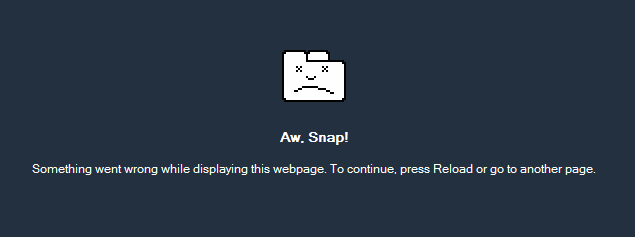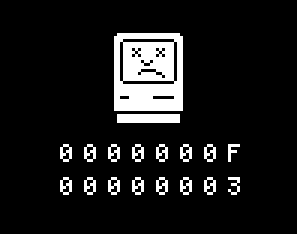Sylvania -G Netbook (Hardware Review)
October 3, 2008 Reading time: 15 minutes
I recently acquired a Sylvania -G Netbook. I would never say that this machine is without flaws, but for the price tag it is a worthy competitor. I picked mine up on sale at Tigerdirect for $299 + Shipping. This price puts it a full bracket beneath Asus’s competition EeePc. Is the EeePc a better machine? In a word, yes. They have released nearly a dozen models and worked out alot of the flaws and challenges of building a machine this tiny. However, their price tag clearly displays their market domination. So I’m going to discuss why, for the right person, the Netbook is a great deal. [And hopefully warn the “wrong person” that this is not the netbook for them]
Tech Specs
- Price- Recommended $399.00 (I have never seen it priced this high, especially with the Netbook Meso coming soon.) Read more
A better solution to Presentations in Linux
September 26, 2008 Reading time: 6 minutes
You may have noticed that OpenOffice is great. You also may have noticed that this greatness runs out when you get to Impress. My primary complaint (Oh there are many, most of them “known issues” at the open office site for years) is a lack of anti-aliasing on shapes. In a business situation, a presentation on par with the expectations of 1995 will only get you so far.


When Chrome Crashes – Aw, Snap! Screenshot
September 24, 2008 Reading time: ~1 minute
Just thought I’d share this – I had a tab get stuck in Google Chrome recently, and when it crashed, this is the error message it displayed:
Aw, Snap, indeed! Hilarious. It’s reminiscent of the infamous “Sad Mac” face from Old World Macintosh computers.
As well as the dreaded “Sad iPod” face that you hope to never see:
Somehow, this touch of humor makes me care a little less that my browser just crashed and burned! 🙂
Install Windows Defender on XP Without WGA Headaches
September 22, 2008 Reading time: 4 minutes
Disclaimer: This article is for educational and informational uses only. In no way do we condone software piracy. Readers should contact Microsoft if legitimately-licensed OEM software does not properly validate.
![]() In a previous article I mentioned how to bypass WGA while installing Windows Media Player 11 on XP. As I stated before, I detest the abominable filth known as Windows Genuine Advantage (WGA), and I refuse to allow it anywhere near my machine.
In a previous article I mentioned how to bypass WGA while installing Windows Media Player 11 on XP. As I stated before, I detest the abominable filth known as Windows Genuine Advantage (WGA), and I refuse to allow it anywhere near my machine.
With that in mind, it’s also possible to install Windows Defender without messing with WGA. Actually, it’s quite simple.
Step 1 – Download
First of all, download the Defender installation file. Of course, you could download it directly from the Microsoft Download Center, but that requires validation, thereby defeating the purpose. Here are direct links: Read more
KeePass – Never Remember a Password Again
September 20, 2008 Reading time: 8 minutes
 I have a confession – I can’t remember ANY of my passwords. In fact, I don’t even know my administrator login for this website! Then again, I don’t need to. The KeePass password manager handles all of it for me.
I have a confession – I can’t remember ANY of my passwords. In fact, I don’t even know my administrator login for this website! Then again, I don’t need to. The KeePass password manager handles all of it for me.
Accounts Galore
Before I begin extolling the virtues of KeePass, allow me to explain why I think a password manager is worthwhile. I can only speak for myself, but I have a ton of account information to remember. Back when the internet was young, I only had a Hotmail account (oh, and maybe a Geocities account, too). That’s it. Time marches on, and now I have login information for multiple e-mail accounts, a plethora of online storage services, several credit cards and bank accounts, and dozens of random internet services, such as eBay and Facebook. Read more
Home & End: Key Bindings in OS X
September 20, 2008 Reading time: 3 minutes
![]() One thing has bothered me about Macs: the key bindings. Specifically, I was annoyed that the home, end, page up, and page down keys don’t work like they “normally” do on a Windows machine. I found myself having to use the awkward “Apple + arrow” combinations to advance to the front or end of a line (home and end normally send the cursor to the beginning or end of the document, not the line). This is awkward at best, and it was made even more awkward when you consider the layout of my Kinesis keyboard (trippy, I know).
One thing has bothered me about Macs: the key bindings. Specifically, I was annoyed that the home, end, page up, and page down keys don’t work like they “normally” do on a Windows machine. I found myself having to use the awkward “Apple + arrow” combinations to advance to the front or end of a line (home and end normally send the cursor to the beginning or end of the document, not the line). This is awkward at best, and it was made even more awkward when you consider the layout of my Kinesis keyboard (trippy, I know).
Even if you don’t have a tripped out keyboard, it makes a lot of sense to have “normal” functionality for your home and end keys AND have the ctrl key functionality within reach when you’re working in the Terminal; a lot of Unix/Linux/Bash stuff is mapped to the ctrl key (e.g. ctrl + c to exit a bash program).
OS X has full flexibility on how you handle your key bindings (woot). All you have to do is create a file that remaps the desired keys. This is best done on a per-user basis, so you create a new file in the user’s Library. Create the directory and file (if necessary), and add the following: Read more


